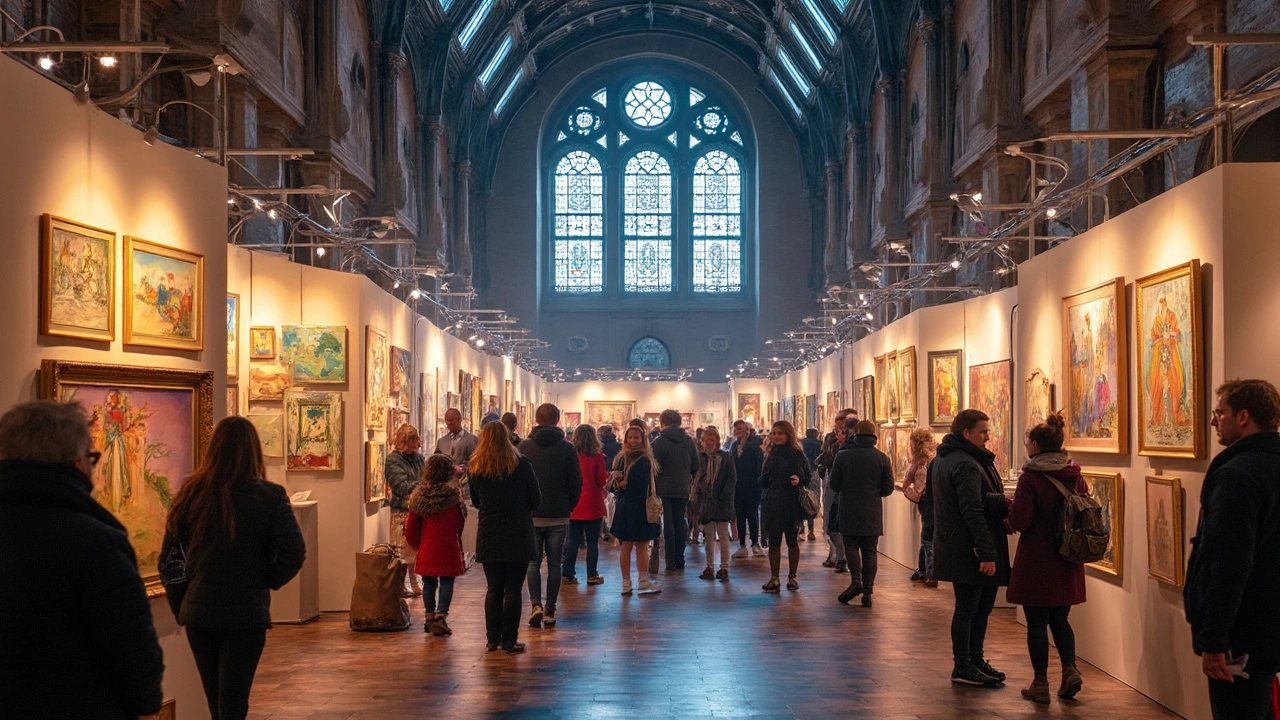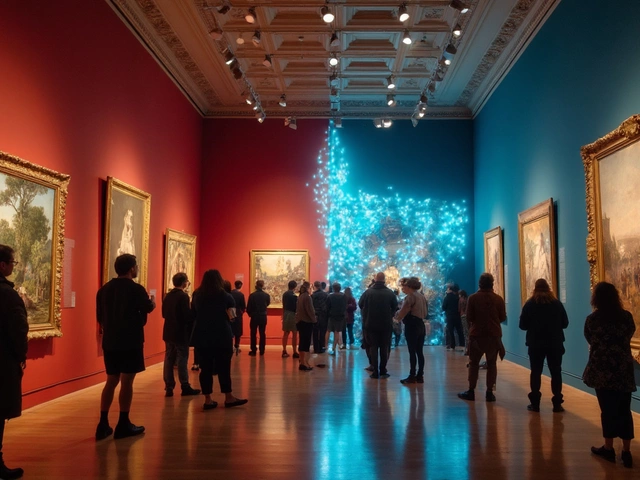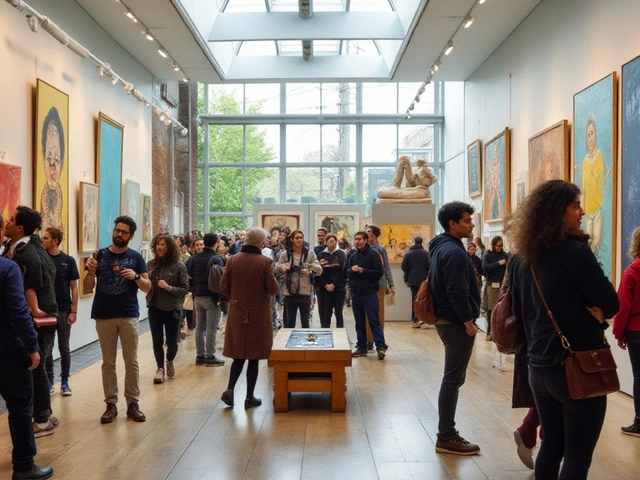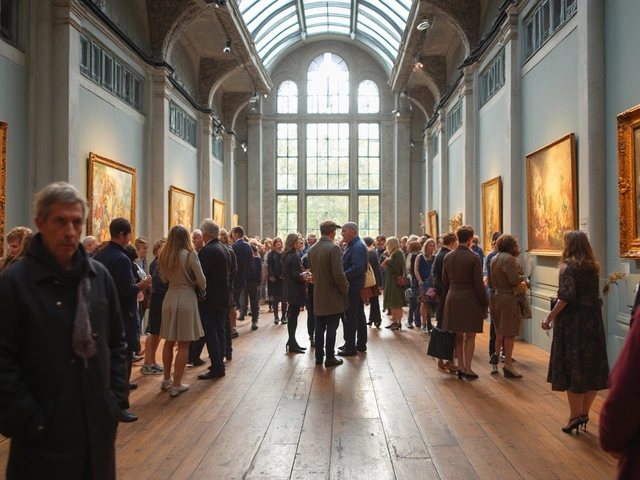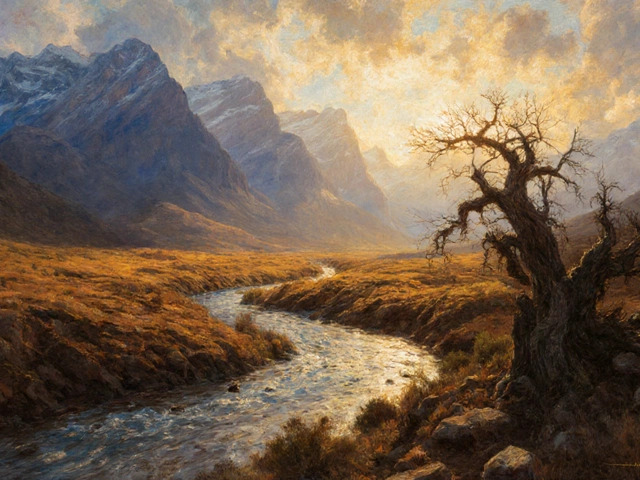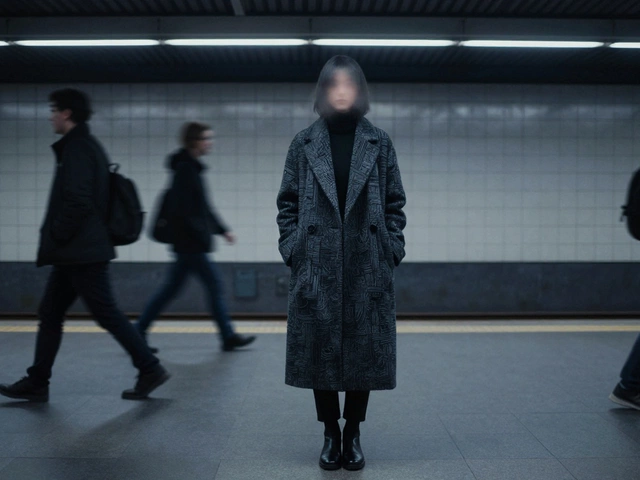Walk into an art fair and you can almost hear the buzz before your eyes catch the first splash of color. Walk into most art exhibitions and you'll likely get calm, focused walls with maybe some quiet footsteps echoing behind you. That difference? It's not random.
Art fairs live and breathe sales. They're fast-paced, crowded, and packed with booths from galleries hoping to sell art—sometimes right off the wall. Art exhibitions, on the other hand, are about experiencing the art itself, not just buying it. The pressure to pull out your credit card is usually much lower, and you get more time to soak everything in.
If you've ever thought both events were just about looking at paintings, you're missing half the story. Getting these two mixed up can lead to some pretty awkward conversations (trust me, showing up to a fair expecting free wine and a peaceful stroll did not end well for me and my youngest, Maris). Understanding the differences can actually save you time, money, and possibly a lot of confusion in front of a very pricey sculpture.
- Purpose and Atmosphere
- How the Art Is Shown and Sold
- Who Goes and Why
- Tips for Visitors: Choosing Your Experience
Purpose and Atmosphere
The main reason for an art fair and an art exhibition is totally different, and that’s where you notice the vibe change right from the entrance. Art fairs are all about business. They bring galleries, artists, collectors, and sometimes even celebrities together under one roof. Everyone's got something to sell, buy, or at least show off. The pace is fast, the energy’s high, and there’s always that background hum of deals being made—even if you’re just there to look.
Big-name art fairs like Art Basel or Frieze New York run like clockwork; they’re usually packed, noisy, sometimes overwhelming if you’re not used to crowds. People are not shy about discussing prices out loud, and you might overhear things like, “Can it fit in my SUV?”
Now, switch to a regular art exhibition. Museums and galleries put these on to focus on the art itself: solo shows, themed exhibits, retrospectives. You’re expected to spend time with each work, read the wall text, and come away knowing something new about an artist or idea. You can feel it in the air—slower, more reflective. No one’s rushing you, and you’re not likely to see a price tag anywhere in the building.
To drive the point home, check out this quick difference between the two:
| Event Type | Primary Purpose | Typical Atmosphere |
|---|---|---|
| Art Fair | Sales, Networking | Lively, Busy, Loud |
| Art Exhibition | Education, Appreciation | Calm, Focused, Quiet |
If you’re easily overwhelmed by crowds, go for an art exhibition. If you love people-watching and maybe even the thrill of spotting artists in the wild, a full-blown art fair will be more your style. Picking the right event means you’ll actually enjoy your time and want to come back—not run for the exit halfway through with ringing ears.
How the Art Is Shown and Sold
Here's where the difference gets obvious. Walk around a art fair like Art Basel or Frieze, and you’ll see hall after hall packed with small gallery booths. Each booth feels almost like a mini-shop, where things are set up to grab your attention and, honestly, your wallet. Prices are often listed (though you still sometimes have to ask), and there's lots of quick talking from gallery reps who really want you to buy something—sometimes before someone else does! At big fairs, a popular painting can be sold in under thirty minutes from opening. That’s faster than most people make up their minds about dinner.
A typical art exhibition runs differently. Take a major show at the Tate or the local art center. Art is displayed based on themes, the artist's story, or planned paths through the gallery. It’s organized for deeper looking, not shopping. Sales might not even happen on site; if pieces are for sale at all, deals are usually handled separately, and often after the show ends. The focus here is on curation—how everything fits together to tell a bigger story. Labels next to the artwork offer info about the piece, not the price tag.
- At art fairs, art changes hands fast, and deals are often closed right there.
- At art exhibitions, buying isn't the main goal, and many pieces aren't for sale at all.
- Exhibitions are usually more curated and slower-paced, while fairs are about the numbers: buyers, sales, and major networking.
| Event Type | Typical Setup | Sales Process | Curatorial Focus |
|---|---|---|---|
| Art Fair | Gallery booths, lots of turnover | On-the-spot, quick deals | Minimal, focused on sales |
| Art Exhibition | Curated rooms, planned flow | Rarely on-site, usually post-event | High, tells a story or theme |
If you want to check out fresh work, meet artists and dealers, and maybe even haggle a bit, a art fair is your spot. If you’re looking for a focused, relaxed experience with art that’s meant to be seen and not just sold, exhibitions deliver that in spades.
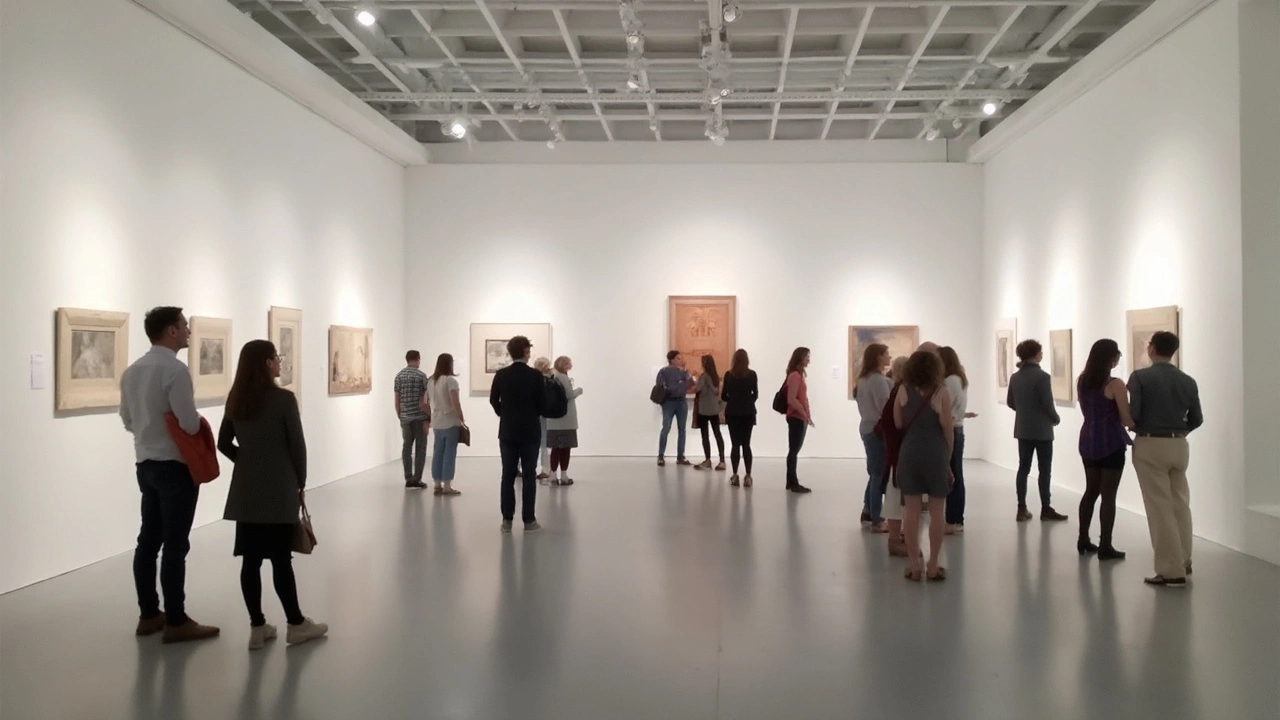
Who Goes and Why
When you show up at an art fair, expect a crowd that’s buying, hustling, or networking. These events attract serious collectors, new buyers, and gallery owners sniffing out what’s hot. It’s business, but it feels like a social event. According to The Art Basel and UBS Art Market Report, more than half of collectors say they buy the bulk of their pieces at fairs. That’s probably why even celebrities sometimes get spotted there, hunting for jaw-droppers for their homes or collections.
Art exhibitions attract a different mood. Here, you’ll rub shoulders with students, tourists, families, artists, and anyone just looking to enjoy art. Museums and public galleries (think MoMA in New York or Tate Modern in London) set these up to let you dive deep into an artist’s vision or a theme. You get time to study a piece or chat with your kid about what that strange sculpture actually means. It’s less about who you know, more about what you see—and feel.
Artists themselves show up at both—but at fairs, they’re often there to network or rep their gallery, while at exhibitions they might be hosting talks or engaging with visitors about their process. As art dealer Jim Kempner put it,
''Art fairs are like speed dating for art collectors—everyone is there to see and be seen, and decisions happen quick.''
Here’s a quick look at the main types of visitors at each event:
| Event Type | Main Visitors | Why They Go |
|---|---|---|
| Art Fair | Collectors, gallery reps, media, VIPs | Buy art, network, spot trends, invest |
| Art Exhibition | Students, families, locals, tourists | Appreciate art, learn, enjoy cultural time out |
If you just want to chill, get inspired, or have a chat about technique, an art exhibition is where you want to be. If you’re ready to wheel and deal, or just people-watch with a side of expensive paintings, hit an art fair.
Tips for Visitors: Choosing Your Experience
Deciding between an art fair and an art exhibition isn't about which one is better—it's about what you want out of your day (and maybe your budget). Both can be fun, but they serve pretty different crowds. Here are some honest tips to help you pick the right fit.
- For Serious Shoppers: If you're looking to buy, art fairs are like a one-stop shop. Most sales at art fairs happen right then and there, with some galleries reporting up to 70% of annual sales made in just a few days at major events (source: Art Basel annual report, 2023).
- For True Art Lovers: If you want to take your time, admire each piece without a sales pitch over your shoulder, art exhibitions deliver that pace. Exhibitions often include info plaques, audio guides, or tours, which ramp up the educational value.
- Kids Tagging Along? Art fairs can feel crowded and overwhelming—think lots of people jostling, not a ton of space for strollers. Exhibitions, though, can sometimes be a little too quiet, but they usually have better kid-oriented activities on weekends.
- On a Tight Budget? Many art exhibitions have free admission days or pay-what-you-wish options, while art fairs might charge higher entrance fees just to browse—sometimes up to $60 for the big ones like Frieze or The Armory Show.
Look at the schedule, too. Art fairs are usually short and intense—three to five days—while exhibitions can run for weeks or even months. If you want to avoid big crowds, hit a fair on a weekday morning. For exhibitions, you usually get a quieter experience, even on weekends.
"Art fairs are where deals happen. But exhibitions are where careers are made and eyes open to new ideas." – David Zwirner, gallery owner (Interview with The Art Newspaper, 2024)
Got social media FOMO? Big art fairs are magnets for influencers and press, so if you want those Instagram shots, that's your scene. But personally, I find you get more authentic feedback about the art itself at exhibitions.
| Event Type | Best For | Typical Costs | Family Friendly? |
|---|---|---|---|
| Art Fair | Buyers, Trend-Spotters | $25-$60+ | Sometimes |
| Art Exhibition | Art Lovers, Learners | Free-$25 | Usually |
Quick tip: always check the event website before you go. Some art fairs have age restrictions or no-stroller policies. Exhibitions may need time-slot reservations, especially for big-name shows. And if you want the art-world gossip? Stick around for the evening openings—just don't expect to find a seat.
